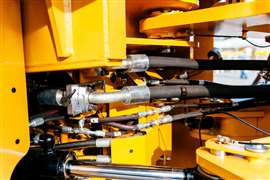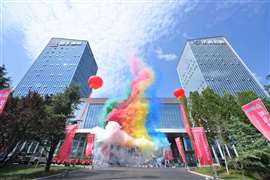Lighting towers: Surge of innovation
16 September 2019
Jobsite efficiency is paramount, so rental companies need to supply robust lighting towers that emulate daylight and ensure the safety of operators. And it is increasingly important that they also combat pollution – noise, air and light.
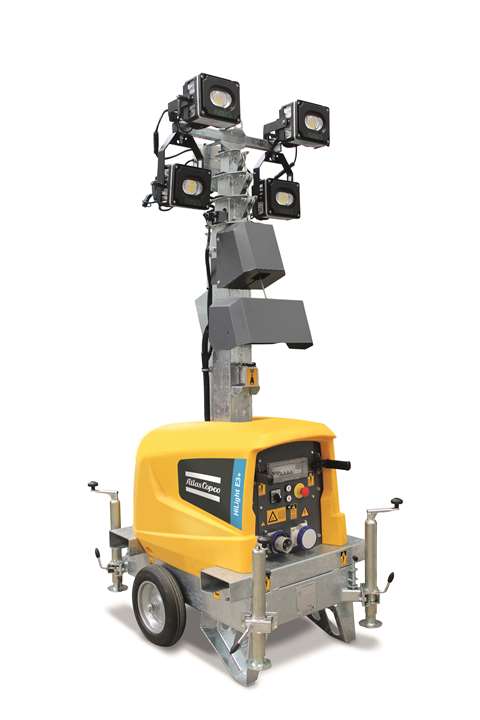
Atlas Copco’s new ‘plug and play’ HiLight E3+ electric light tower is said by the company to offer environmental resilience. Its internal electronics, control panel and connectors are protected by Atlas Copco’s HardHat canopy, while the complete assembly – including a heavy-duty 7m mast – has a certified wind stability of 100km/h.
Félix Gómez, Atlas Copco Divisional Product Marketing Manager, Light Towers, said, “The HiLight E3+ light tower will operate reliably throughout the most demanding conditions found at construction sites. Because of this, it extends application opportunities, improves reliability, reduces total cost of ownership, and preserves resale values.”
The light will plug into any power source, including a genset or directly to the grid. For example, one 6kW P8000 Atlas Copco genset will power up to 10 HiLight units. Four 160W LED lights give 3,000m2 illuminated coverage and the manufacturer claims it is 15% brighter than similar models on the market.
Up to 32 of the compact units can be transported on a standard 13m truck. Features of the HiLight E3+ include galvanised heavy-duty outriggers, wider wheels and an optional electric winch.
The Bauma, Munich, exhibition in April saw the release of Atlas Copco’s Hi-Light Z3, its first ever battery-powered lighting tower. With its lithium-ion batteries, the lighting tower produces almost no noise and zero emissions, and it can run for up to 32 hours before requiring recharging.
Clean air
UK manufacturer and rental company Taylor Construction Plant (TCP) offers what it describes as “the world’s first low-energy, hydrogen fuel cell powered LED lighting tower”. The Ecolite TH200 is a clean air alternative to diesel, as well as being almost silent in operation. The tower uses prismatic lens technology to eliminate light pollution.
Working with rail equipment rental company Torrent Trackside (part of VP plc), TCP provided Network Rail in the UK with 25 portable Ecolite TH200 hydrogen fuel cell light towers positioned at various site locations along the Oxford Corridor. This helped Network Rail reduce noise pollution and carbon emissions within the residential area while work was being carried out at night.
The use of hydrogen fuel cell powered lighting towers illustrates the rapid changes that the lighting tower sector is going through.
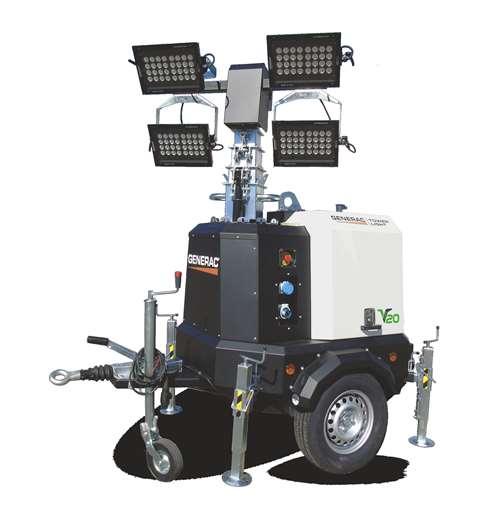
Alessandro Rossi, managing director at Generac Mobile Products, said, “With the proliferation of LED, the rise of lithium-Ion in hybrid models, along with the demand for zero carbon products, the lighting sector is now shifting towards a more customer-centric model.”
This change has brought about a ‘surge of innovation’ in product design and performance. Generac’s own V20 and Cube+ ranges are said to be more sustainable with improved usability and uptime. Rossi said, “Compact design, power, efficient engine performance and dimmable LED control have been applied to these ranges.”
Telemetry is described by Rossi as “one of today’s most accessible technology advancements for uptime”.
He said, “New uptime models within hire will see telemetry being used in aftersales service strategies with greater access to intelligent data and analytics. The technology will enable hirers to create and deliver preventative maintenance schedules and it will further improve the usability with intelligent alarm setting, mobile alerts and operational instructions direct to mobile devices for operators.
“But the key to success lies in the partnership between manufacturer, hirers and users. Telemetry data within hire can change how manufacturers and hirers work together with greater collaboration on design and machine configuration, along with instant connectivity between user and machine.”
LED trend
US-based Allmand Bros – owned by Briggs & Stratton since 2014 – has more than 80 years of experience in the industry. It told IRN that different operating platforms and power sources are a main focus in lighting tower development.
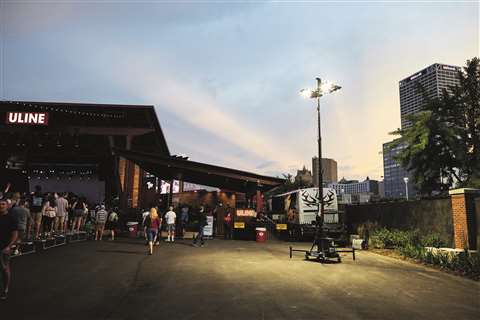
“We prioritise flexibility in every light tower to better adapt to the individual jobsite lighting needs,” said Joan Westwater, Allmand’s product manager. “Digital technology in the rental channel is becoming more and more important. The rental industry is more sophisticated and is providing increased communication to the equipment such as use, service intervals, run time, fault codes and light tower controls. As digital technology progresses, machine uptime will inherently improve.”
Regarding the enhancement of machine uptime, the company said that quality components, along with sensors and controls to protect key components from damage, are important. Westwater said, “Our Sequential Lighting System and Light Sequence Commander are ideal for this purpose, and available on all lighting tower models. Run time is increasing with improved engine fuel efficiencies and extended maintenance intervals along with larger fuel tanks.”
![]()
Other key trends highlighted by the company are efficiency and light output. LED technology is ‘trending’ as it provides increased illumination with less power consumption. Light placement strategy is also crucial – the location of the light towers as well as proper fixture positioning can affect the total quantity of light towers needed on a job site.
Elsewhere in North America, Canada-based portable electrical equipment manufacturer Lind Equipment released the vertical mast version of its Beacon LED tower earlier this year, following the lay flat version.
Features of the new tower include rugged caster wheel steering, and quick and simple set up with the single winch design; at 165cm high, the vertical mast tower can fit through a standard doorway.
Lind Equipment said that both versions of the Beacon LED tower deliver all the light output (1,000W), run time and durability of traditional metal halide light towers, but use 80% less power and cost half the price.
Collaborating
Paclite has developed a new lighting tower in collaboration with Hatz. The PL2000 ECO LED was designed with the idea of creating a product that can be rented by a wider customer base while still delivering reduced emissions.
The single-cylinder Hatz IB30 air-cooled engine powers the lighting tower’s four 450W crush-proof LED lamps and consumes 0.4 litres of fuel per hour.
It has an 8m automatic telescopic hydraulic mast, and the unit weighs less than 750kg, so it can be transported with a normal B driving licence.
The tower also has centrally positioned lifting points and inserts for forklifts, as well as double brakes – a manual brake for parking and an automatic brake for towing.
Terex’s Aerial Work Platform business also manufactures a range of lighting towers, although these are not certified for sale in Europe. Speaking about Terex’s gas-powered RL4 LED light towers, Josh Taylor, Genie Product Manager, Terex AWP, said, “Durable, reliable and cost-effective LED lighting is now available in North American rental markets.
“Thanks to the LED light modules’ extended lifespans, lower energy consumption and maintenance requirements, this type of light tower is in high demand on construction sites. And it is competitively priced against traditional units, so our customers will get all the benefits of this innovative technology while also realising a high rental return on invested capital.”
The LED lights have 50,000 hours of service life and are engineered with instant on/off capability – giving 100% brightness almost immediately, as well as cooling off quickly.
Regarding the RL4’s run time, Taylor said, “With a 17.5-gallon fuel tank, users will get approximately 80 hours of run time per tank. The smaller engine also requires fewer maintenance items like fuel filters, oil filters or V-belts.”
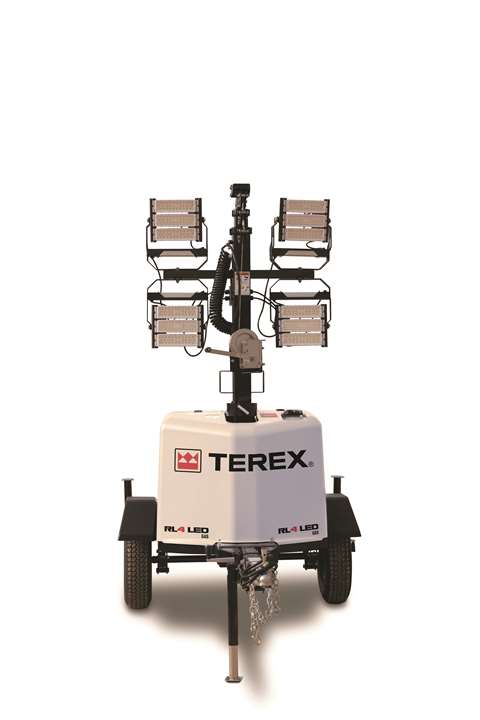
Terex said that the model has clean, quiet operation. It can be plugged into and run from a standard wall outlet off the power grid for completely emissions-free operation, as well as working well in noise-sensitive work environments with 58dBA at 7m under full load.
Taylor said, “Thanks to its compact footprint design, customers can haul up to 17 units on a 48ft trailer, expanding rental opportunities.”
The LTE light tower from Wacker Neuson, released last year, is said to emulate daylight closely in its light quality with six 150W glare-free LED lights, free of shadowing. The adjustable 8.5m vertical mast has a hydraulic winch for safety and is easily set up at the push of a button.
The lights can be activated manually by setting a timer or automatically via photocell when it gets dark, providing lighting on 3.8m2.
Wacker Neuson’s Automatic Mast Operating Safety System is available as an option to prevent the light tower from being towed with the mast up.
Benefits for rental include long service intervals, longer operating times and less downtime.
The company’s lighting portfolio also includes flexible and compact light balloons used in a module system, which can be adapted to different lighting needs. Wacker Neuson’s 110,000-lumen metal halide lamp and 50,000-lumen halogen lamp both offer a bright light but without the glare.
Genny Hire and Murphy Plant upgrade fleet with Trime
Genny Hire, which rents generators, lighting towers and associated equipment across North East Scotland, has begun a process to upgrade its fleet of lighting towers, starting with the purchase of ten X-Eco LED sets from Trime UK.
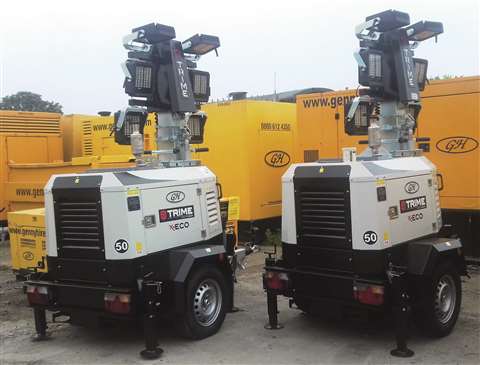
The units have been fitted with Chalwyn valves and spark arrestors to make them suitable for use on refinery and petro-chemical sites, as well as any other environments where ‘rig-safe’ specifications are a prerequisite.
Lorna Clark from Genny Hire said, “We aim to hire these lighting towers into refinery and petro-chemical sites. This is an area of our business we are seeking to develop, and as the oil and gas sector market becomes busier in Aberdeen again, we will have the correct specification of machines readily available.”
Meanwhile, UK-based rental company Murphy Plant – part of the contractor J Murphy & Sons – has increased its fleet of lighting towers with the addition of 30 Trime X-Eco LED and 10 Trime X-Hybrid lighting sets.
The company, which is also responsible for the day-to-day supply and operation of plant, equipment and transport for its parent contractor, made the investment as part of plans to upgrade and renew its rental fleet.
The X-Hybrid units will be used by the Murphy transport business, predominantly on rail projects supported by their North West depot near Manchester, UK.
Murphy Plant’s current plan is to hold a dual fleet of X-Eco LED and X-Hybrid units to allow flexibility on their project requirements.
Coates Hire chooses SMC
Australian equipment rental company Coates Hire has placed a major order with UK-based Morris Site Machinery as part of a three-year contract.
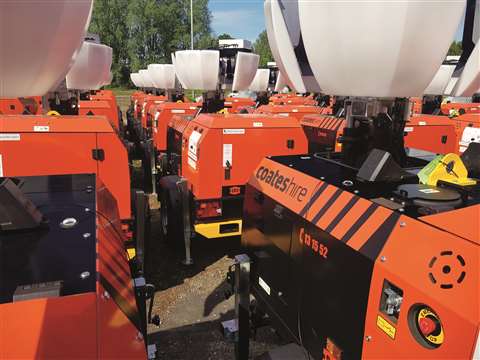
More than 100 SMC portable lighting towers are in production to meet the first stage of the order. The partnership will see SMC TL90 Ultimate Extra Low Voltage (ELV) lighting towers with anti-glare Halo lamp heads and the compact and transportable SMC SL80 Pallet LED make their way to Australia.
Phil Winnington, International Business Director at Morris Site Machinery, said, “We are working to build more partnerships in Australia where our SMC brand has proven it can deliver in demanding terrain and climates while meeting health and safety requirements and the need to be more sustainable and environmentally aware.”
The SMC TL90 Ultimate ELV, used on highways and rail projects, has a running time of 265 hours and a particularly quiet operation of just 61.5dBA at 7m. The SMC SL80 Pallet LED is a static 8m mast lighting tower with four 320W LEDs powered by a Kubota Z482 engine. It also has a run time of 265 hours and extended service times.
STAY CONNECTED



Receive the information you need when you need it through our world-leading magazines, newsletters and daily briefings.
CONNECT WITH THE TEAM










